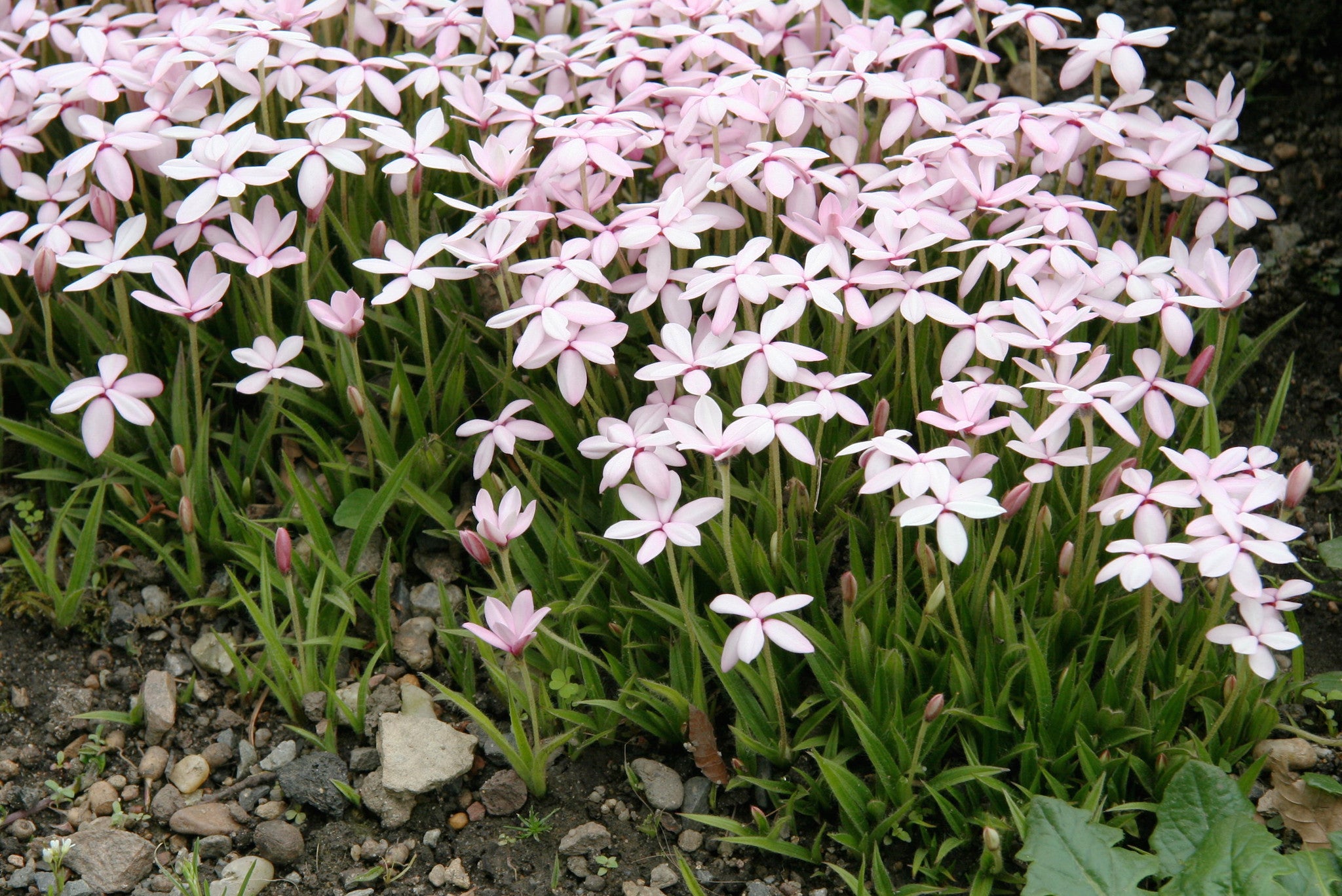Rhodohypoxis baurii
Approx. 0.5 litre pot
About this cultivar:
Rhodohypoxis baurii is the naturally occurring species from south of Africa. Thus you get a bit of colour variation in the flowers from light to deep pink. The original...and best?
- Position: Full sun, partial shade
- Soil: Dry soil
- Flowers: May, June, July, August
- Other features: Grows well in Ballyrobert, Suitable for Container
- Hardiness: Fully hardy, grows well in Ballyrobert
- Habit: Clump forming
- Foliage: Deciduous
- Height: 5 - 10 cm (0.15 - 0.3 ft)
- Spread: 5 - 20 cm (0.15 - 0.6 ft)
- Time to full growth: 2 to 5 years
- Plant type: Herbaceous Perennial, Alpine or Rockery
- Colour: Green, pink, white
- Goes well with: -
About this genus:
Rhodohypoxis is a small genus of tuberous flowering plants in the family Hypoxidaceae. The small flowers are distinguished by the fact their centres are usually not visible. They grow from small tubers, flower in the summer, and die down in the winter. The leaves are usually small grey-green and strap like. When in flower, they are typically 2–15 cm (1–6 in) tall. The flowers are usually white, pink, red, or some combination of those colours. Regular dead-heading of the spent flowers helps to improve flowering performance.
They are native to the eastern part of southern Africa, particularly in the Drakensberg mountains in the province of Natal, South Africa and Lesotho. This is a region of summer rainfall with relatively dry winters. Thus the plants get a reputation as being frost hardy. NOT SO WITH US! The combination of cold AND moisture is lethal to these plants. We have far too wet a climate here at Ballyrobert and our plants tend to only last until the inevitable hard winter every 5 or so years. But they are so beautiful and versatile (stick them in any little hole, nook, or cranny) we think it is worth the cost of replacing them every 5 years! If you want yours to survive make sure they are somewhere quite dry, like a pot (brought inside over winter), wall or rock garden. Or cover them in a winter with something resembling a cloche.


